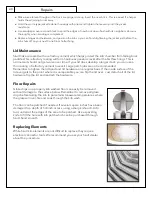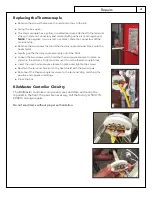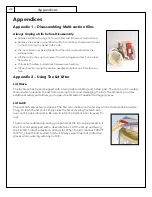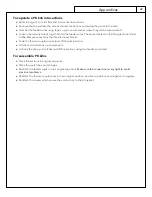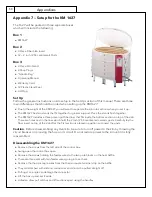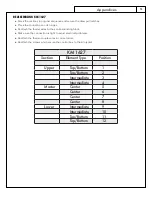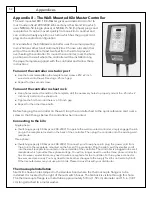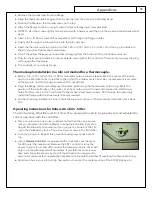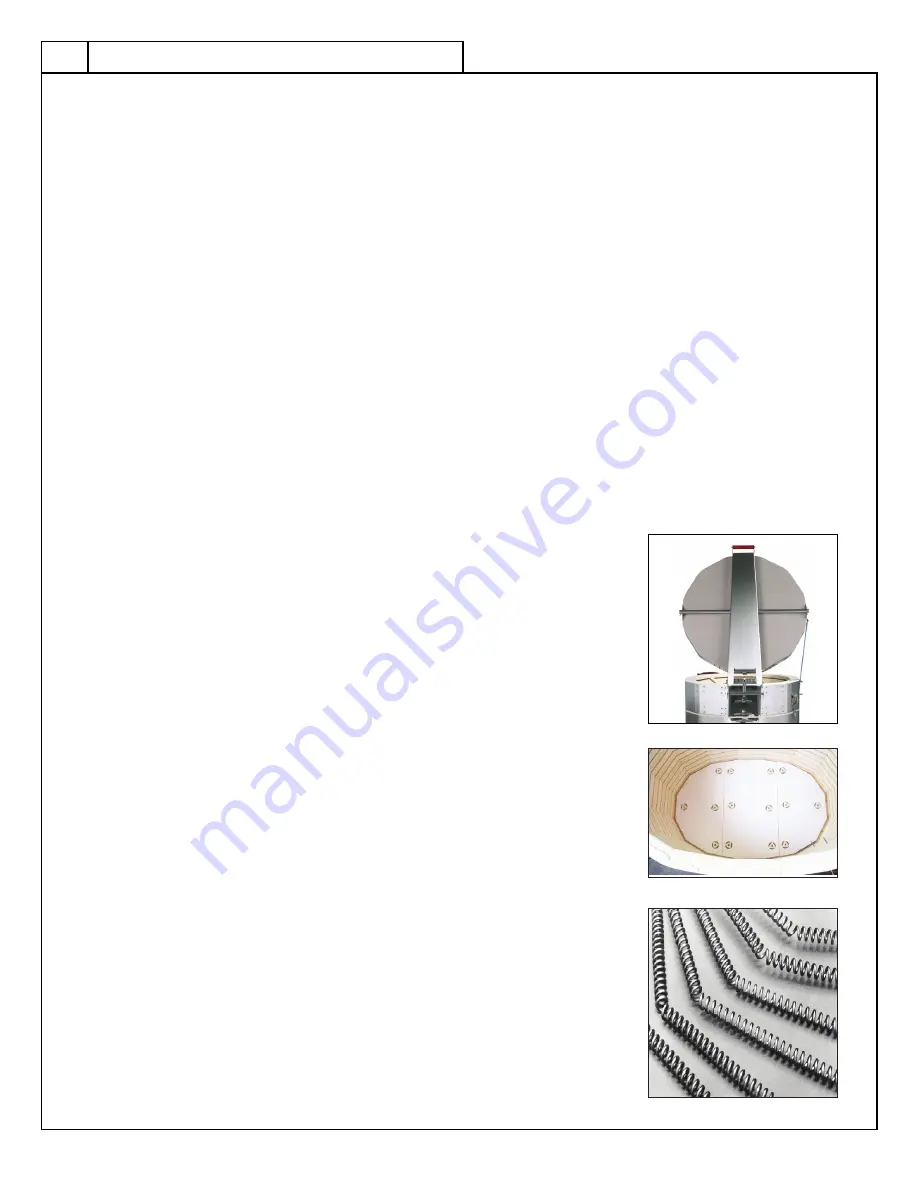
40
●
Make sure element troughs in the brick are proper side up. Insert the new brick. This is easiest if a helper
holds the adjoining bricks away.
●
Hold the worm-type jacket fastener housings with pliers and tighten them evenly until they meet
resistance.
●
Use sandpaper over a wood block to sand the edges of new brick down flush with its neighbors. Vacuum
thoroughly when sanding is completed.
●
Replace hinges and hardware, and position the kiln so you can finish tightening the jacket just before the
kiln shuts off on your next Cone 06 or hotter firing.
Lid Maintenance
Skutt lids are coated with a refractory cement which helps protect the kiln chamber from falling brick
particles.This refractory coating will form hairline expansion cracks after the first few firings. This is
normal and should not get worse over time. If your lid does develop a larger crack, you can use a
thin coating of refractory cement to seal it. Large patch jobs are not recommended.
Remember to tighten the lid band and lid hardware on a regular basis. If the inside surface of the
lid ever gets to the point where it is unrepairable you can flip the lid over. Just detach all of the lid
hardware, flip the lid and reattach the hardware.
Floor Repairs
Glaze drips on a properly kiln washed floor can easily be removed
without damage to the surface below. Remember to remove all glaze
drips before taking the kiln to porcelain/stoneware temperatures, where
the glaze will over-fire and soak through the kiln wash.
The floor can be patched if needed. If several square inches have been
damaged to a depth of 5/8 inch or less, using a sharp knife or X-Acto
tool, undercut the edges of the area to be patched. Use a spackling
knife to fill the hole with kiln patch which can be purchased through
Skutt. Sand smooth
Replacing Elements
While Skutt kiln elements are not difficult to replace, they require
electrical connector tools. We recommend you ask your Skutt dealer
about the procedure.
Repairs















